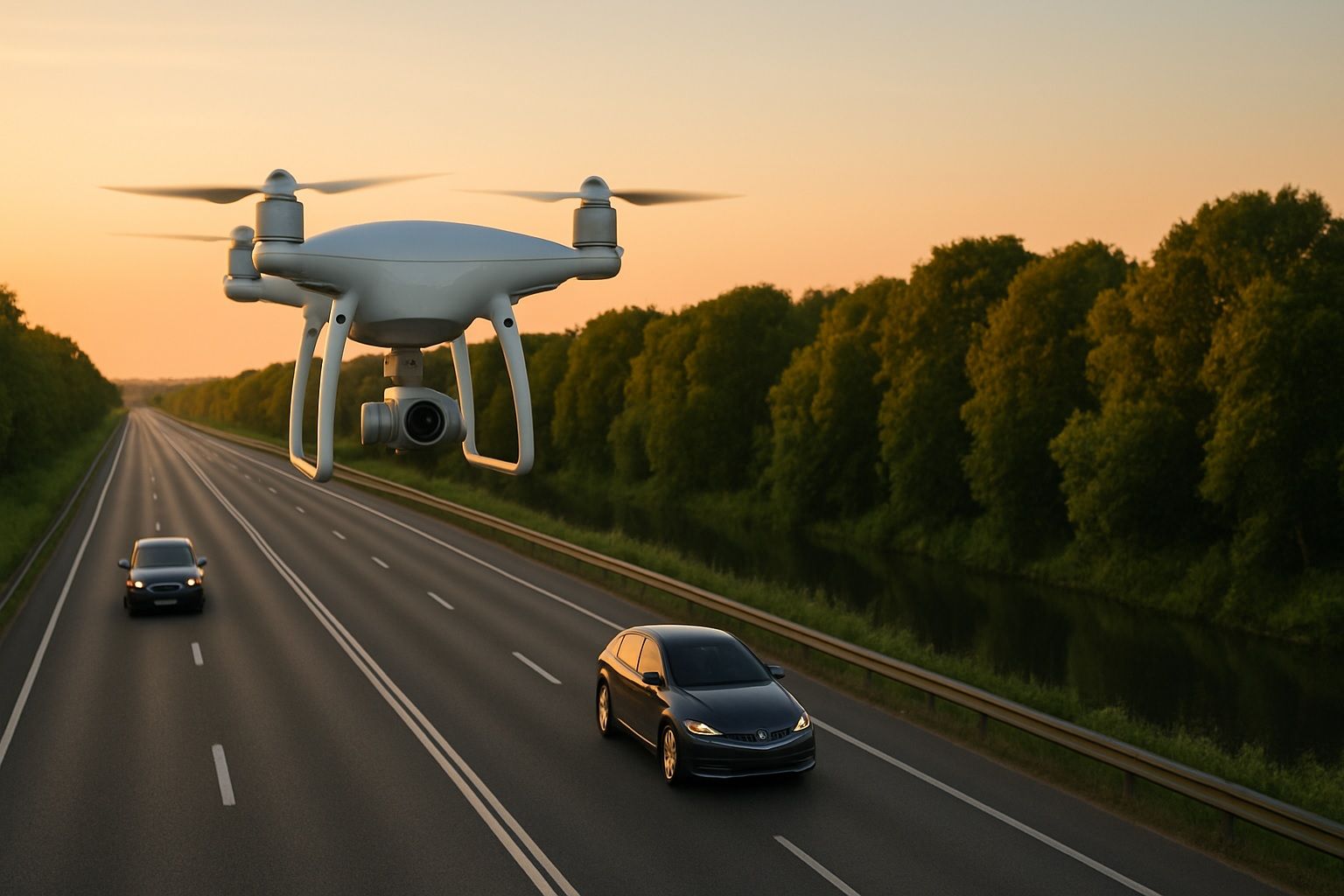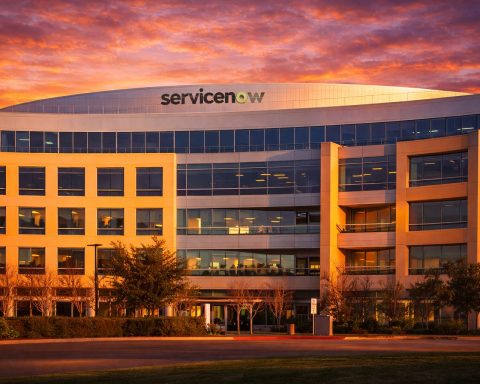- In June 2025 Genoa, Italy was selected to host Project Hafnia, an AI-driven traffic management platform by Milestone Systems in partnership with NVIDIA, using a digital twin of the city via NVIDIA Omniverse to train vision AI models for real-time congestion mitigation.
- Dubai’s Roads and Transport Authority signed a 42-month SaaS contract to deploy Iteris ClearGuide for citywide traffic monitoring, turning complex transportation data into actionable insights like bottleneck detection and congestion alerts.
- In Mumbai, India, JalVimana launched an initial fleet of 11 Candela P-12 electric hydrofoil ferries to form a new electric water transit network aimed at reducing road congestion and pollution.
- Istres, France, deployed a private 5G network in June with Ericsson, SPIE and Unitel, cutting CCTV backhaul costs by 83% (from €30,000 to €5,000 per camera) and enabling encrypted emergency communications for future IoT use.
- Luxembourg kicked off SmartSpires, a €3.1 million EU-backed living lab unveiled in early June to deploy at least three multi-function smart towers with 5G, edge computing, and IoT sensors to support real-time AI services and reduce latency.
- Fort Worth, Texas, rolled out 3,400 solar-powered streetlights across 30 neighborhoods, funded by a $12 million American Rescue Plan grant, delivering about $3 million in annual energy savings and featuring off-grid operation with Fonroche Lighting.
- Auckland, New Zealand began converting the Waitākere Transfer Station into a Resource Recovery Park as part of its Zero Waste by 2040 strategy, enabling item refurbishment, composting, and resale of second-hand goods.
- The UK Ofwat launched a £600 million Innovation Fund in July to back water sector projects using nature-based solutions and digital tech, including SuDS integration and smart leak detection.
- Seattle, Washington approved deployment of 30 IKE Smart City kiosks downtown by 2026, offering real-time transit information, free public Wi-Fi, local business listings, digital art displays, and emergency call buttons, financed by advertising revenue.
- Oxford, England announced a £1.7 million low-carbon district heating network featuring a 20 MW hydrothermal heat pump to decarbonize historic public buildings.
The mid-2025 period saw a surge of smart city initiatives worldwide, with new technologies rolling out across mobility, energy, water, waste management, and urban IoT platforms. Governments and industry leaders launched projects from AI-driven traffic systems to net-zero buildings, reflecting a shared focus on sustainability, efficiency, and digital innovation. Major investments and policy moves during June–July 2025 underscore trends like electrified transport, smart grids, 5G connectivity, and data-driven city services, as cities seek to improve quality of life and meet climate goals. Below, we detail key news, expert commentary, and forecasts from this period, organized by sector and theme, with a global perspective.
Smart Mobility and Transportation
Intelligent Traffic Management: In June 2025, cities embraced AI to optimize traffic flow. Genoa, Italy was selected to host Project Hafnia, an AI-driven traffic management platform by Milestone Systems in partnership with NVIDIA. This initiative uses a digital twin of the city (via NVIDIA’s Omniverse) to train vision AI models for traffic control [1]. After a successful U.S. launch, the European rollout in Genoa aims to fine-tune computer vision for real-time congestion mitigation and transit planning [2]. Similarly in Dubai, the Roads and Transport Authority (RTA) signed a 42-month SaaS contract to deploy Iteris ClearGuide software for citywide traffic monitoring [3]. The platform will turn complex transportation data into actionable insights – detecting bottlenecks, issuing congestion alerts, and supporting smarter incident response [4]. These AI-powered systems promise safer, more efficient roads by leveraging data analytics and automation.
Public Transit and Urban Mobility: Cities also invested in transit hubs and new mobility modes. In Austin, Texas, officials advanced plans to transform two major transit centers (North Lamar and South Congress) into “equitable mobility hubs”. The vision includes transit-oriented development within a half-mile radius to enhance walkability and affordable housing near these hubs [5]. The city envisions mixed-use, pedestrian-friendly areas that improve access to transit while spurring inclusive growth [6]. Across the world in Mumbai, India, an ambitious electric water transit project was announced to cut road congestion. Local operator JalVimana is launching an initial fleet of 11 Candela P-12 electric hydrofoil ferries – forming the core of Mumbai’s new electric ferry network [7]. These battery-powered boats will glide above water to connect key city points, with plans for significant fleet expansion. The electric ferries aim to provide a faster commute across the bay while reducing traffic jams and pollution in the metropolis [8].
Emerging Mobility Solutions: Other mobility updates include micromobility and autonomous transport. Lime, a global micromobility firm, chose Baltimore among the first cities for its new LimeBike and LimeGlider e-bikes rollout, citing the city’s investments in protected bike lanes as an enabler [9]. Meanwhile, in the advanced air mobility space, the White House issued an executive order supporting eVTOL (electric vertical takeoff and landing) aircraft, which was quickly followed by a major funding boost: Archer Aviation secured $850 million to develop urban air taxis [10]. This reflects growing confidence in aerial mobility to complement urban transportation. On the ground, Coventry, UK saw the ride-hailing platform FreeNow partner with a local taxi firm, allowing users to book licensed taxis via an app – an example of digital platforms expanding mobility-as-a-service into new cities [11].
Urban Energy and Infrastructure
Green Building & Retrofit Projects: In June, cities advanced projects to modernize infrastructure for sustainability. Milan, Italy began transforming the iconic Pirelli 35 office tower (65 years old) into an energy-efficient smart building [12] [13]. Led by Siemens Smart Infrastructure and COIMA, the retrofit will cut the building’s energy use by ~60% and CO₂ emissions by 2,000 tons annually [14] [15]. This project, preserving the building’s heritage facade while installing smart systems, is touted as a blueprint for retrofitting Europe’s aging commercial buildings to meet net-zero targets by 2030 [16]. In Bristol, UK, construction commenced on a net-zero emissions affordable housing development as part of a UN Habitat climate-smart cities challenge. Designs include solar panels and energy-efficient materials, aiming to provide green homes for low-income residents [17].
Smart Grids and Renewable Energy: On the power infrastructure front, Greece launched one of the region’s most ambitious smart grid upgrades. The national utility HEDNO (Hellenic Electricity Distribution Operator) signed a contract to deploy Itron’s advanced metering infrastructure (AMI) and data management systems, managing 7.7 million electric meters [18]. The project will also roll out nearly 1 million new NB-IoT smart meters to improve real-time monitoring and integrate distributed renewables [19]. By enabling grid-edge intelligence, HEDNO aims for better outage detection, reduced losses, and support for Greece’s 2050 net-zero goal [20] [21]. In Oxford, England, a £1.7 million low-carbon heating network was announced, featuring a 20 MW hydrothermal heat pump to warm historic public buildings [22]. This innovative district heating project will help decarbonize a city known for its many heritage buildings, which pose challenges for conventional retrofits [23].
Smart Lighting and Streets: Cities continued to invest in intelligent street infrastructure. In Fort Worth, Texas, officials rolled out a massive installation of 3,400 solar-powered streetlights across 30 neighborhoods [24]. Funded by a $12 million American Rescue Plan grant, this project aims to improve safety and community infrastructure while saving the city over $3 million annually in energy costs [25] [26]. Partnering with French firm Fonroche Lighting, Fort Worth is replacing old or inoperative streetlights with off-grid solar lamps equipped with battery storage. These units guarantee 365-night illumination even during outages and eliminate the risk of copper wire theft [27] [28]. Fort Worth’s Public Works director highlighted the resilience and cost savings of this off-grid solution, noting it ensures uninterrupted lighting and cuts maintenance burdens [29] [30]. Such solar lighting projects also advance sustainability by cutting emissions, and are being phased citywide through 2026.
Digital Connectivity and IoT Platforms
5G Networks & Urban IoT: High-speed connectivity underpins many smart city services launched in this period. A notable example is Istres, France, a mid-sized city that deployed a private 5G network in June with Ericsson, SPIE and Unitel, aiming to strengthen public safety communications. By switching its CCTV camera backhaul from fiber to 5G, Istres slashed surveillance connection costs by 83% (from €30k to €5k per camera) [31] [32]. Only 10 cameras were needed to justify the network’s cost, yielding a “favourable ROI,” according to Ericsson [33]. Beyond cost savings, Istres’ private 5G provides sovereign, encrypted communications for emergency response and lays a foundation for future IoT uses like AI traffic analytics and smart city expansion [34] [35]. Ericsson noted this as one of Europe’s first mid-sized city 5G deployments, calling it a model for others to follow in enabling secure, citywide wireless infrastructure [36] [37].
Elsewhere, Luxembourg kicked off SmartSpires, a €3.1 million EU-backed living lab to turn the Belval innovation campus into a smart city prototype. Unveiled in early June, SmartSpires will deploy at least three multi-function “smart towers” equipped with ultra-fast 5G, edge computing nodes, IoT sensors, and digital signage [38]. These towers act as local data hubs enabling real-time AI services – from intelligent traffic management and crowd analytics to smart waste collection optimization [39] [40]. By processing data at the edge, the system reduces latency and improves privacy (keeping sensitive data on-site) [41]. Use cases being piloted include using 5G + edge to improve public transit, analyzing pedestrian flows for safety, and deploying IoT sensors to optimize recycling and waste pickups [42]. Luxembourg’s Minister for Connectivity hailed the project as putting the country “at the forefront of digital innovation,” demonstrating how integrated connectivity and AI can improve urban services while protecting data [43] [44].
City Data Platforms and Services: Cities are also enhancing digital services for residents. In Seattle, USA, the City Council approved deployment of IKE Smart City kiosks downtown – an interactive platform for wayfinding and civic information. The first 30 kiosks, expected on Seattle streets by 2026, will provide real-time transit info, public Wi-Fi, local business listings, digital art displays, and emergency call buttons, all funded by advertising with no cost to the city [45]. City leaders say these touch-screen kiosks will help visitors navigate the city, promote local commerce, and generate revenue for urban improvements [46] [47]. In San José, California, the city launched a citywide data strategy focused on equity and innovation [48]. The new strategy treats “data as a service”, making it easier for departments to share high-quality data and analytics tools to improve services like homelessness response and performance-based budgeting [49]. By breaking down data silos, San José aims to enable evidence-driven policymaking and ensure emerging tech (like AI) is used responsibly to benefit all communities [50].
Even internal city operations are getting digitized: Santa Monica, CA introduced a next-gen procurement platform called G-Commerce to modernize how the city purchases goods and services [51]. This cloud system streamlines bidding and increases transparency, marking a major step in Santa Monica’s digital transformation of government processes [52]. Together, these examples show cities leveraging IoT and digital platforms not just for infrastructure, but also to deliver information and improve governance.
Environment: Smart Water and Waste Management
Water Innovation: Addressing water infrastructure and climate resilience was a key theme. In the UK, water regulator Ofwat announced a £600 million innovation fund spotlighting the role of nature-based solutions in solving water challenges [53]. Launched in July, the fund backs projects where water companies collaborate with tech innovators and environmental groups to tackle issues like flood control, water leakage, and ecosystem restoration [54]. Some funded ideas include integrating sustainable urban drainage (SuDS) in neighborhoods and citizen science programs to monitor water quality [55] [56]. The emphasis on nature-based innovation reflects a shift toward more holistic, climate-resilient water management in cities.
Across the Atlantic, Brazil’s federal government released national smart city guidelines in early July to steer urban development priorities. The guidelines stress practical solutions to concrete urban challenges, with particular focus on digital inclusion and safe, accessible public services [57]. In the water sector, this means encouraging technologies that expand access to clean water and sanitation, while engaging communities. The Brazil guidelines also align with global principles of sustainability and resilience, providing a reference for municipalities and public-private partnerships in Latin America [58].
Waste Reduction and Circular Economy: City initiatives in June–July 2025 also targeted waste and recycling. Auckland, New Zealand made strides in its Zero Waste by 2040 strategy by retooling its largest trash processing site. The Waitākere Transfer Station in Henderson is being converted into a full-scale Resource Recovery Park that prioritizes retrieving reusable materials from waste instead of landfilling [59]. By mid-June the city had shifted the facility’s focus to salvaging items for reuse and recycling – a move expected to dramatically reduce trash sent to landfill [60]. This park will allow residents to drop off goods for refurbishment, compost green waste, and purchase second-hand items, cultivating a circular economy at the community level. Auckland’s effort not only diverts waste but creates green jobs and engages citizens in sustainability, keeping the city on track toward its 2040 zero-waste goal [61].
In the private sector, numerous startups are also addressing urban waste via IoT – from smart bins that signal fill levels to AI that improves recycling sorting – though specific deployments in this period were less publicized. Still, the trend is clear: cities are increasingly viewing waste as a resource, leveraging tech and public participation to minimize environmental impact.
Policy Initiatives and Collaboration
Governments and international organizations used this period to solidify support for smart city development. In London, the C40 Cities network (a global alliance of mayors) signed a memorandum of understanding with Singapore’s Centre for Liveable Cities in July, aiming to accelerate urban sustainability initiatives [62]. This partnership will facilitate knowledge exchange on topics like transit electrification, green buildings, and climate adaptation between C40 member cities and Singapore – known for its smart nation expertise [63]. Such cross-border collaborations underscore the value of sharing best practices and scaling successful pilots globally.
National policy was also in focus. The UK launched an Adept Digital Leadership Academy to boost digital skills for local government officials [64]. Announced in mid-June, this academy will train council staff in data analytics, digital service design, and smart infrastructure management. It directly addresses capacity gaps at the local level – from climate action planning to implementing IoT systems – and is meant to empower authorities to “lead change [and] use data more effectively” for better community outcomes [65]. By upskilling personnel, the UK hopes to ensure its cities and counties can fully leverage new technologies and handle the complexities of smart city projects [66].
Local governments are also creating regulatory sandboxes to foster innovation. In Scotland, North Lanarkshire Council is set to launch a “roads decarbonisation sandbox” – a controlled testing program where companies can pilot low-carbon road materials and techniques [67]. The goal is to identify and remove barriers to scaling up greener asphalt, recycled materials, and other carbon-cutting methods in road maintenance [68]. Such initiatives signal proactive public-sector support for innovation through real-world trials and iterative learning.
Finally, city leaders continue to champion smart city agendas as part of broader economic recovery and growth plans. Fort Worth’s Mayor Mattie Parker, for example, stated that to support rapid growth, the city “must innovate by championing smart solutions that honor [our] history while pushing us forward” [69]. Her comments, made on a local innovation podcast, highlight how mid-sized cities view smart infrastructure – from renewable lighting to data partnerships – as key to future prosperity. Public-private partnerships (P3s) are often emphasized in this context. Fort Worth’s solar lighting and other projects involve P3 models, and experts note that collaboration between government and industry is crucial to mitigate financial and operational risks in smart city programs [70] [71].
Expert Insights and Market Outlook
Industry Trends: Experts observing the smart city sector in mid-2025 point to a convergence of technologies accelerating urban innovation. A report by Research & Markets (June 2025) noted that 5G connectivity and edge computing are game changers, enabling real-time data processing for applications like traffic control and emergency response [72]. The same report highlighted rising integration of AI, IoT sensors, and data analytics across city domains, from energy grids to healthcare, to make services more efficient [73] [74]. There is also a strong focus on cybersecurity and data privacy as cities digitize operations. Notably, open data initiatives are spurring third-party app development, and many cities are adopting “digital twin” simulations to plan and manage infrastructure. All these tech trends are underpinned by the need for resilient design – solutions that can adapt to climate change and population growth.
Investment & Growth: The market for smart city technologies continues robust growth. Globally, the smart city market is projected to expand from about $469 billion in 2024 to $516 billion in 2025 (10%+ annual growth) [75]. Long-term forecasts show the market potentially reaching $826 billion by 2030 [76], driven by urbanization and stimulus funding. Major funding areas include smart utilities (like grid modernization and water systems), smart mobility (EV infrastructure, intelligent transport), and smart buildings. For instance, the U.S. infrastructure law and EU green recovery funds are channeling billions into city projects, which is reflected in the flurry of 2025 rollouts. Private investment is also high – witness the startup accelerator Leading Cities shortlisting 100 top “AcceliCITY” urban tech startups for 2025 (in areas like resilience and IoT) [77]. Venture capital and corporate investors are increasingly backing companies that address cities’ biggest pain points such as traffic safety, carbon reduction, and public safety.
Experts also foresee evolving business models. Public-private partnerships (P3s) are now viewed as essential: city governments rarely finance large smart projects alone, and partnering with tech firms helps manage costs and share expertise [78] [79]. Outcome-based contracts, where vendors are paid upon delivering results (e.g. energy savings), are becoming more common [80]. Additionally, the role of policy cannot be overstated. By mid-2025, many countries are standardizing smart city frameworks (like Brazil’s guidelines and EU’s smart city funding criteria) to ensure interoperability and inclusive growth. This creates a more favorable environment for investment, albeit with an eye on equity – making sure that smart city benefits reach all citizens, not just tech-savvy or affluent groups.
Table 1: Selected Smart City Initiatives (June–July 2025)
| Sector | Initiative & Location | Description and Impact | Source |
|---|---|---|---|
| AI Traffic Management | Project Hafnia – Genoa, Italy | NVIDIA & Milestone deploy city digital twin for AI-driven traffic control, allowing developers to train vision models on real city video data (EU pilot rollout) | [81] |
| Smart Mobility (Water) | Electric Hydrofoil Ferries – Mumbai, India | Launch of 11 Candela P-12 electric ferries to form a new commuter network, easing road congestion and cutting transit emissions on city waterways (expanding clean mobility) | [82] |
| Private 5G Network | Istres, France | Deployment of municipal 5G network slashing CCTV connection costs by 83%. Enables encrypted emergency comms and future IoT use cases, model for mid-size cities’ connectivity | [83] [84] |
| Smart Grid Upgrade | HEDNO Grid Modernization – Greece | National utility installing 7.7 million smart meters plus IoT data management for real-time grid insights. Improves efficiency, customer service, and DER integration toward net-zero 2050 | [85] |
| Solar Street Lighting | Fort Worth, USA | City+Fonroche partnership to install 3,400 solar LED streetlights in 30 neighborhoods. Off-grid lights improve safety and save $3 M/year in energy, funded by federal recovery grant | [86] [87] |
| Waste to Resource Park | Auckland, New Zealand | Conversion of largest waste transfer station into resource recovery park. Focus on salvaging materials for reuse, supporting Auckland’s zero-waste 2040 goal and circular economy jobs | [88] |
| Water Innovation Fund | Ofwat “Innovation Fund” – United Kingdom | £600 million fund for water companies and tech partners to deploy nature-based and digital solutions (e.g. community SuDS, smart leak detection) tackling water scarcity & flooding | [89] |
Expert Commentary: City leaders and industry experts during this period emphasized that technology is a means to an end – improving livability and sustainability. As Singapore concluded its AI Governance pilot, officials stressed the importance of “responsible AI adoption” and released a test kit to guide safe use of generative AI in city applications [90]. This reflects a broader insistence on ethical tech deployment. Likewise, climate action remained a top priority in expert forums. The Cities Climate Action Summit (June 2025 in London) showcased examples like Toronto’s net-zero community center and Miami’s digital twin for flood management, but also warned of uneven progress. In the UK, a Council Climate Action Scorecard report found many local authorities are lagging on tasks like home retrofits and public transport improvements, averaging only ~38% completion of climate actions [91]. The NGO Climate Emergency UK urged the national government to make local climate action a funded legal mandate to accelerate progress [92] [93]. This expert callout underscores that policy support and funding must keep pace with cities’ climate ambitions.
Finally, looking ahead, analysts predict the smart city sector will continue to mature through 2025 and beyond. More cities will move from pilot projects to scaled deployments, leveraging lessons from early adopters. Regional differences are expected – for example, North American cities often lead in funding and large pilot programs, Europe focuses on privacy and sustainability, while Asian cities drive innovation in mega-projects [94]. Yet common challenges remain: ensuring cybersecurity, securing financing, and demonstrating ROI to citizens. As the table above illustrates, 2025’s mid-year developments show an increasing alignment between technology deployments and tangible urban benefits – from safer streets and cleaner air to better access to services. This period’s news and insights suggest that with collaborative governance and community engagement, smart city platforms can indeed deliver on their promise of more livable, resilient, and inclusive cities for the future.
Sources: The information in this report is drawn from a variety of credible sources, including city government announcements, industry news sites, and expert analyses. Notable references include SmartCitiesWorld news updates [95] [96], official press releases [97] [98], and industry research reports [99] [100], as cited throughout. These sources provide a factual basis for the described projects, investments, and expert viewpoints.
References
1. www.smartcitiesworld.net, 2. www.smartcitiesworld.net, 3. www.globenewswire.com, 4. www.globenewswire.com, 5. www.smartcitiesworld.net, 6. www.smartcitiesworld.net, 7. smartcampus.facens.br, 8. smartcampus.facens.br, 9. smartcampus.facens.br, 10. www.linkedin.com, 11. smartcampus.facens.br, 12. www.linkedin.com, 13. smartcampus.facens.br, 14. www.linkedin.com, 15. smartcampus.facens.br, 16. smartcampus.facens.br, 17. smartcampus.facens.br, 18. www.globenewswire.com, 19. www.globenewswire.com, 20. www.globenewswire.com, 21. www.globenewswire.com, 22. smartcampus.facens.br, 23. smartcampus.facens.br, 24. smartcampus.facens.br, 25. dallasinnovates.com, 26. smartcampus.facens.br, 27. dallasinnovates.com, 28. dallasinnovates.com, 29. dallasinnovates.com, 30. dallasinnovates.com, 31. www.rcrwireless.com, 32. www.rcrwireless.com, 33. www.rcrwireless.com, 34. www.rcrwireless.com, 35. www.rcrwireless.com, 36. www.rcrwireless.com, 37. www.rcrwireless.com, 38. www.prnewswire.com, 39. www.prnewswire.com, 40. www.prnewswire.com, 41. www.prnewswire.com, 42. www.prnewswire.com, 43. www.prnewswire.com, 44. www.prnewswire.com, 45. downtownseattle.org, 46. downtownseattle.org, 47. downtownseattle.org, 48. smartcampus.facens.br, 49. smartcampus.facens.br, 50. smartcampus.facens.br, 51. smartcampus.facens.br, 52. smartcampus.facens.br, 53. smartcampus.facens.br, 54. smartcampus.facens.br, 55. smartcampus.facens.br, 56. smartcampus.facens.br, 57. www.smartcitiesworld.net, 58. www.smartcitiesworld.net, 59. www.smartcitiesworld.net, 60. www.smartcitiesworld.net, 61. www.smartcitiesworld.net, 62. www.smartcitiesworld.net, 63. www.smartcitiesworld.net, 64. smartcampus.facens.br, 65. smartcampus.facens.br, 66. smartcampus.facens.br, 67. smartcampus.facens.br, 68. smartcampus.facens.br, 69. dallasinnovates.com, 70. www.globenewswire.com, 71. www.globenewswire.com, 72. www.globenewswire.com, 73. www.globenewswire.com, 74. www.globenewswire.com, 75. www.globenewswire.com, 76. www.globenewswire.com, 77. smartcampus.facens.br, 78. www.globenewswire.com, 79. www.globenewswire.com, 80. www.globenewswire.com, 81. www.smartcitiesworld.net, 82. smartcampus.facens.br, 83. www.rcrwireless.com, 84. www.rcrwireless.com, 85. www.globenewswire.com, 86. dallasinnovates.com, 87. smartcampus.facens.br, 88. www.smartcitiesworld.net, 89. smartcampus.facens.br, 90. smartcampus.facens.br, 91. www.linkedin.com, 92. smartcampus.facens.br, 93. smartcampus.facens.br, 94. www.globenewswire.com, 95. www.smartcitiesworld.net, 96. smartcampus.facens.br, 97. www.globenewswire.com, 98. www.globenewswire.com, 99. www.globenewswire.com, 100. www.globenewswire.com










